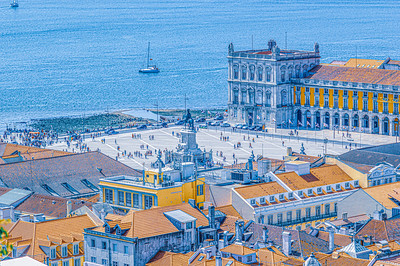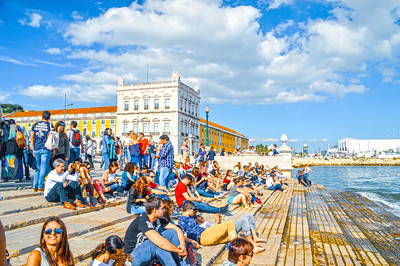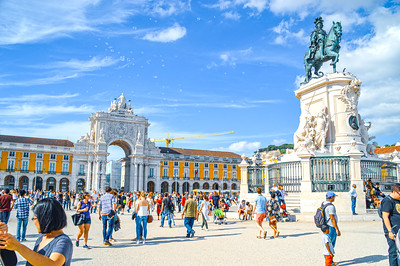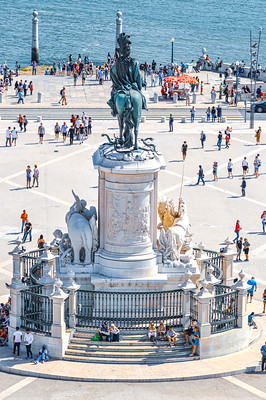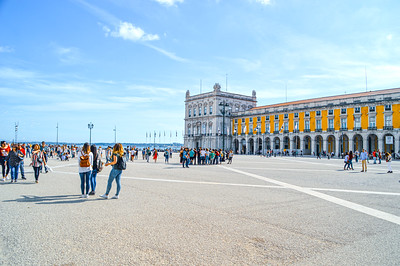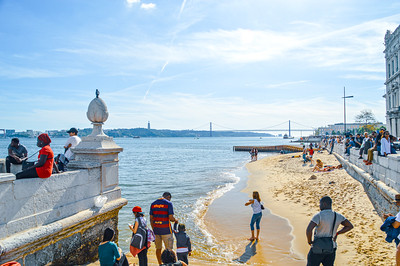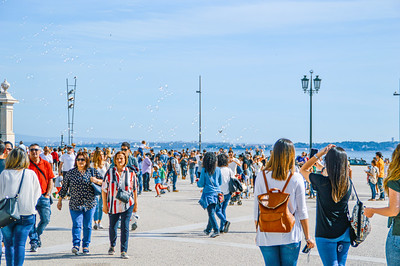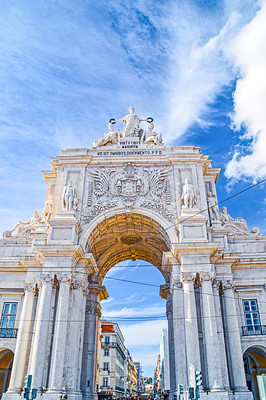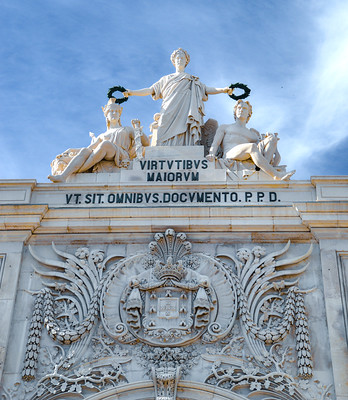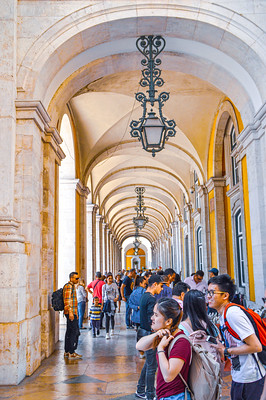About Praça do Comércio
Facing the Tagus (Tejo) to the South, the plaza is still commonly known in Portuguese as Terreiro do Paço (Palace Yard),] as it hosted the Paço da Ribeira (Royal Palace of Ribeira) until the latter was destroyed by the great 1755 Lisbon earthquake (the subway station located there is still named after the old name of the plaza).
Urban development of the banks of the Tagus river (the Ribeira) was given firm impulse in the early 16th century, when King Manuel I built a new royal residence – the Ribeira Palace – by the river, outside the city walls. The area was further developed with the building of a port, shipbuilding facilities (the Ribeira das Naus), the Casa da Índia and other administrative buildings that regulated the commerce between Portugal and other parts of Europe and its colonies in Africa, Asia and the Americas.
On 1 November 1755, during the reign of King José I, a great earthquake followed by a tsunami and fire destroyed most of Lisbon, including the Ribeira Palace and other buildings by the river. José I's Prime Minister, the Marquis of Pombal, coordinated a massive rebuilding effort led by Portuguese architect Eugénio dos Santos. He designed a large, rectangular square in the shape of a "U", open towards the Tagus. The buildings have galleries on their ground floors, and the arms of the "U" end in two large towers, reminiscent of the monumental tower of the destroyed Ribeira Palace, still vivid in the architectural memory of the city. His plan was realised almost completely, although decorative details were changed and the east tower of the square and the Augusta Street Arch were only finished in the 19th century. This triumphal arch was designed by the Portuguese architect Santos de Carvalho and was completed in 1873. The top section includes statues representing important Portuguese figures such as Vasco da Gama and the Marquis of Pombal.
The square was named Praça do Comércio, the Square of Commerce, to indicate its new function in the economy of Lisbon. The symmetrical buildings of the square were filled with government bureaux regulating customs and port activities. The centrepiece of the ensemble was the equestrian statue of King José I, inaugurated in 1775 in the centre of the square. This bronze statue, the first monumental statue dedicated to a king in Lisbon, was designed by Joaquim Machado de Castro, Portugal's foremost sculptor of the time.
en.wikipedia.org
